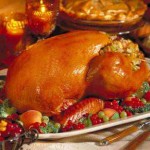 A recent article that appeared in www.forbes.com summarized a study by the National Center for Policy Analysis which investigated the spending habits of baby boomers who are considered not ready to retire yet. While many blame the lack of retirement-ready boomers on sub-par 401(k) and IRA performances, the report looks at boomers’ spending habits for other clues.
A recent article that appeared in www.forbes.com summarized a study by the National Center for Policy Analysis which investigated the spending habits of baby boomers who are considered not ready to retire yet. While many blame the lack of retirement-ready boomers on sub-par 401(k) and IRA performances, the report looks at boomers’ spending habits for other clues.
The NCPA compared the pre-retirement spending habits of today’s middle-aged workers (45 to 54 years old) and today’s older workers (55 to 64 years old) with the spending habits of those age groups 20 years ago. The group notes that real incomes for these age groups have not changed much but the portion of disposable income households spent on certain categories of goods and services has increased.
Many baby boomers are spending a lot more on education given the fact that the cost of a college education has grown faster than income for decades. From 1990 to 2010, education expenditures increased the most — by 80% for 45 to 54 year olds and 22% for 55 to 64 year olds. The report notes that outstanding student loans today amount to more than $1 trillion. A recent analysis by the New York Federal Reserve Bank found that one-third of the nation’s student loan debt is held by individuals over the age of 40.
Another rising cost that is hurting pre-retirees today is health care. Health care expenditures — including all out-of-pocket expenses and insurance premium expenses – rose 30% for 45 to 54 year olds and 21% for 55 to 64 year olds. Insurance premiums nearly doubled as a share of health care expenditures for both age groups, the study notes, adding that the growing cost of health care has essentially used up the gains in median family income over the last 10 years.
Adult children are also taking a toll on their boomer parents. Nearly 50% of parents with children between age 18 to 39 were supporting them in various ways including living expenses, transportation costs, spending money, medical bills and help with paying loans like student debt.
Another rising cost is mortgage debt. From 1990 to 2010 the share of expenditures on housing including principal, mortgage interest, taxes, maintenance and insurance for both age groups increased 25%. Interestingly, the 55 to 64 year olds saw half of the increase in the interest portion of housing expenditures even though mortgage interest rates have dropped over time. Also, after 2000, home price growth outpaced income growth, peaking in 2004 and 2005. Home prices began falling dramatically by the end of 2008, but many households were underwater, owing more on their mortgages than their homes were worth. Making mortgage debt even further complicated is that the age of first-time homebuyers is up from 28 in 1985 to 35 in 2011.
The study also noted the items that boomers have not increased their spending on. One is entertainment or dining out. In fact, cut back on some categories have been noted from 1990 to 2010. For instance, food purchases (including restaurant spending) are down 18% for 45 to 54 year olds and 20% for 55 to 64 year olds. Household furnishings also fell nearly one-third for 45 to 54 year olds and one-fourth for 55 to 64 year olds. Clothing expenses showed the biggest decline, falling 42% for 45 to 54 year olds and 70% for 55 to 64 year olds.
“Contrary to the belief that the savings rate has been stagnant, or even declined, retirement accounts appear to be playing a larger role for baby boomers. However, retirement savings is nowhere near the 10 percent that is often recommended as the share of income that should be dedicated to savings,” Pamela Villarreal of NCPA says in the summary of the report.



